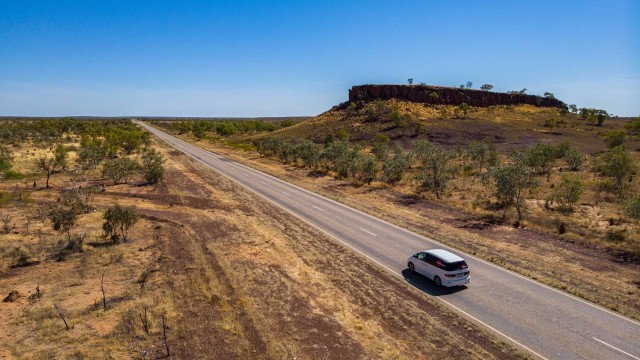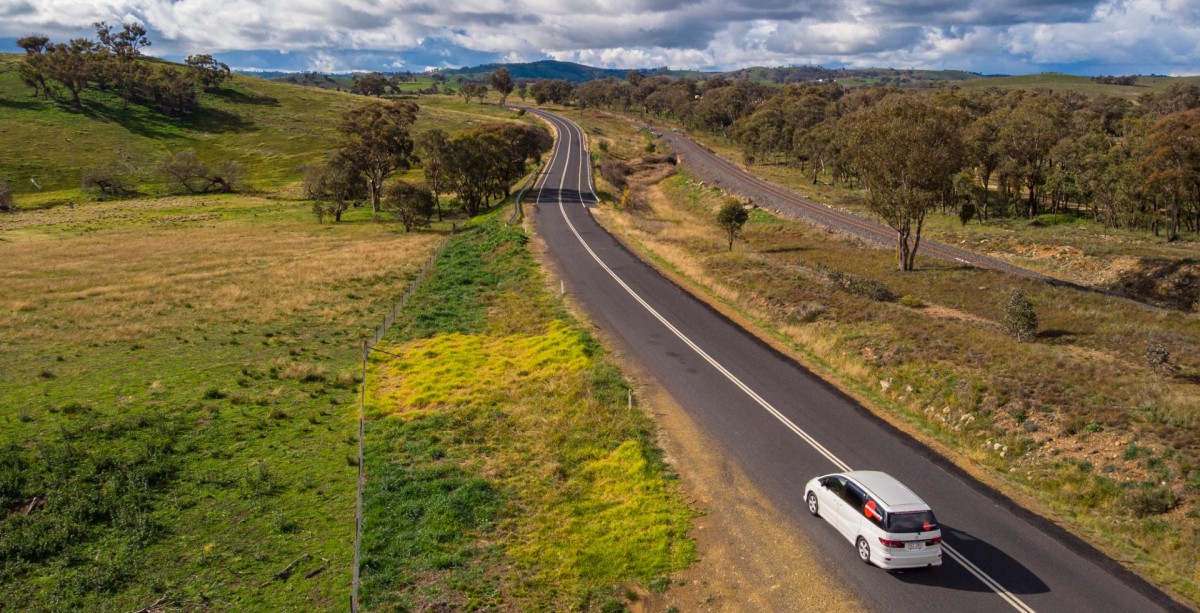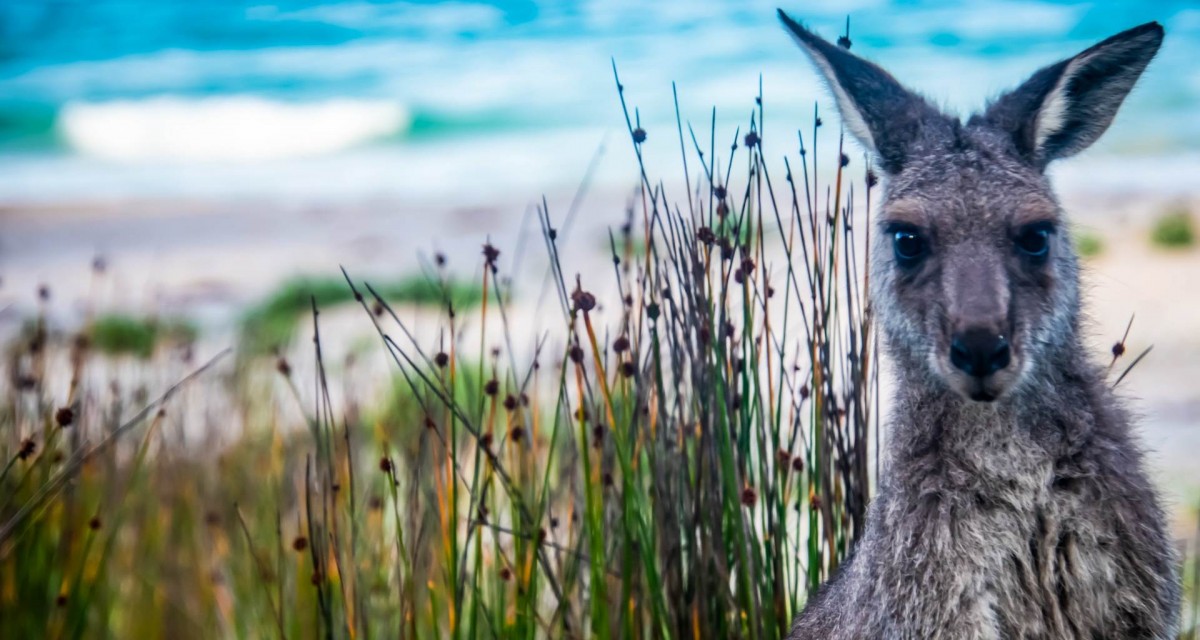Award-Winning Campervan Hire in Australia | Email, chat or call the Spaceships AU Crew

Hit enter to search or ESC to close

Essential Driving Tips for First-Time Travellers in Australia. Stay Safe & Enjoy the Ride
03 April, 2025
Posted by Marty | Spaceships Crew
Australia's vast landscapes offer an unforgettable driving experience. Before you hit the road, it’s crucial to understand the unique challenges of driving in Australia. Whether it's navigating the left side of the road, watching out for wildlife, or staying informed during bushfire season, this guide provides everything you need to know to drive safely and confidently on your Australian #SpaceshipsRoadTrip. Dive in and discover how to make your journey as safe as it is enjoyable.
Important Australian road rules
Driving in Australia involves some unique rules that may be different from those in Europe or the USA.
- Keep Left - Australia drives on the left side of the road, which can take some adjustment for overseas drivers. Always keep left, especially when turning or at intersections.
- Seatbelts / Buckle Up - Seatbelts are mandatory for everyone in the vehicle. Ensure everyone is strapped in before you start driving. Seatbelts must be worn correctly over the shoulder. There are seatbelt cameras in Australia with significant fines if seatbelts are not work correctly
- Stick to the Speed Limit - Speed limits vary between 50 km/h in urban areas and 100-110 km/h on highways. Remember, the speed limit is the maximum, not a target - drive slower in bad conditions or unfamiliar areas.
- Drive According to Conditions - Adjust your speed for weather, road, and traffic conditions. Slow down in rain, fog, or ice.
- Stop at STOP Signs - Make a complete stop at all STOP signs and check that it's safe to proceed before moving on.
- Be Careful Around Bends - Reduce your speed when approaching curves, especially in wet weather or on unfamiliar roads.
- Overtake Safely - Only overtake when it’s safe. Use designated passing lanes and never cross solid lines.
- Share the Road - Australia’s roads are shared with cyclists, pedestrians, and even horse riders. Keep a safe distance - 1.5 meters where possible - and be patient.
- No Drink Driving - Australia has strict laws on driving under the influence. The legal Blood Alcohol Concentration (BAC) limit is 0.05%. Always be a sober driver.
- Hands Off Your Mobile - Avoid using your mobile phone while driving. If you need to make a call or send a message, pull over safely. Fines for mobile use are high, and it’s dangerous. There are mobile phone cameras in Australia and you may be fined if the driver is touching a phone. This includes if your phone is sitting on your lap.
- Take Your Time - Australia is vast, and driving often involves long distances. Allow extra time for your journey and enjoy the ride.
Extra tips about parking in Australia
- Left-Hand Side: Always park on the left-hand side of the road. It's illegal to park facing oncoming traffic.
- Check Signs: Look for parking signs indicating time limits, such as 2P for two hours or 3P for three hours. Overstaying can result in fines.
- Transit Lanes: In cities, you might see T2 or T3 signs. These are transit lanes, and you can only drive in them if you have the specified number of people (including the driver) in the car.

It all starts with driving on the left-hand side of the road but there are more things to think of when roadtripping in Australia
How Australian roads compare to Europe or the USA
Australian roads vary greatly depending on the region. In cities, the roads are generally well-maintained, similar to those in Europe or the USA, but rural and remote areas may have gravel or dirt roads that require caution.
Distances between towns can be vast, and amenities like fuel stations or rest stops may be sparse, so plan ahead. Wildlife, especially at dawn and dusk, can present a unique hazard.
Watch out for wildlife in Australia
Driving in Australia offers breathtaking scenery but also comes with the unique challenge of sharing the road with wildlife. Different and bigger wildlife than what you might be used to on roads at home. For example, kangaroos, emus, wombats, and even koalas may unexpectedly cross your path. Also, large animals like kangaroos or roaming livestock can cause severe accidents if struck. Staying alert and cautious will help protect both you and Australia’s unique wildlife on your journey. Here are some handy tips on how to stay safe from wildlife while roadtripping in Australia.
- Drive During the Day - Animals are most active at dawn and dusk, so it’s safer to drive during daylight hours.
- Pay Attention to Signs - Look out for wildlife warning signs, especially in rural areas.
- Don’t Swerve - If an animal appears, avoid sudden swerves. Brake gently if it’s safe to do so.
- Watch for Reflections at Night - Animal eyes can reflect your headlights. Slow down if you see any reflections.
- Use High Beams Wisely - Use high beams on dark, empty roads, but switch to low beams when near animals or oncoming traffic.
In case of a wildlife accident, report it to local authorities or wildlife rescue services like WIRES or the RSPCA. Contact the local police if the road is blocked. Additionally, please inform Spaceships about the accident by filling out our Insurance Claim Form.

Kangaroos are cute to see in their natural environment but they can also be a hazard when crossing roads at night
Weather impact: bushfires and floods
Additionally, extreme weather conditions like bushfires or heavy rain can make driving more challenging. Staying informed and prepared will help ensure a safe and enjoyable driving experience in Australia. Here’s how to stay safe from Mother Nature’s whims.
- Stay Informed - Monitor weather reports and fire warnings via apps or the Bureau of Meteorology website.
- Listen to Authorities - Follow instructions from emergency services. If you’re advised not to travel, stay put.
- Check Road Conditions - Before you drive, check for road closures or hazards. Never drive through floodwaters.
- Plan Your Route - Choose routes that are less likely to be affected by fires or floods.
- Be Flexible - If your plans are affected, contact us or your accommodation provider to adjust your arrangements.
Getting road trip ready
Reading these tips and knowing the road rules, is the first step in getting Aussie road trip ready. Here are some extra tips to test your knowledge or get even more info about driving in Australia.
- Free road rule tests for Australia by Driver Knowledge Tests.
- Road rules awareness videos by Transport for NSW
Make it a great and safe #SpaceshipsRoadTrip
Exploring the outer space of Australia as Space Traveller is so much fun. We hope these safe driving in Australia tips have helped you prepare for your adventure. If there are any questions, have a look at our Support Station or contact the friendly Spaceships Aussie Crew. We’re always happy to help.

Marty | Spaceships Crew
Marty is Spaceships’ residential digital geek; an explorer at heart, with a deep love for the scenic wonders of Western Australia, South Australia, and Queensland. His articles are a treasure trove of road trip tips, travel tales, and personal musings, all delivered with a dash of geekiness, humour and a whole lot of heart.
But Marty's adventures aren't just about the scenery. He's always keen on discovering craft beer breweries to unwind after days of roadtripping. And if there's a record store nearby, you can bet he'll be browsing the aisles, hunting for that next great vinyl addition to his collection.